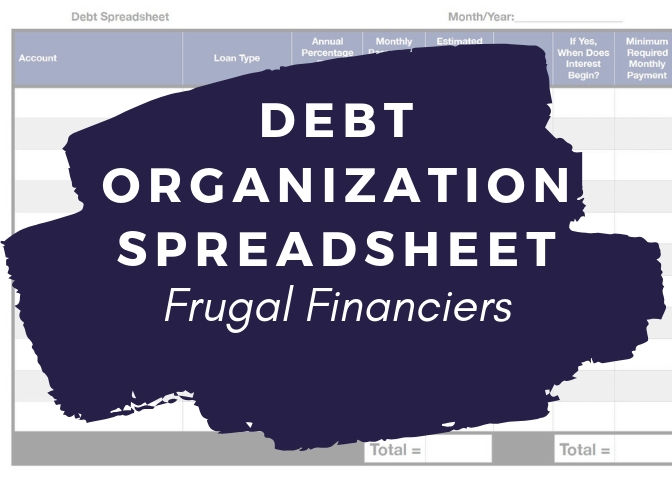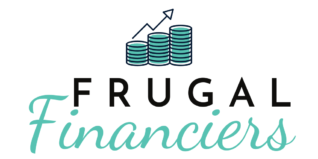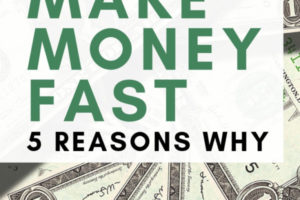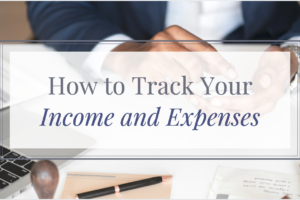You’ve finally started earning a little more cash than you spend. If you have debt, you probably want to pay some of it down if not completely off.
That will help you lower your interest expense which will allow you to pay down even more debt. It’s a beautiful cycle of debt payoff.
Pretty exciting, right?
Personally, we get more excited sometimes about saving money from paying off debt rather than investing because it’s guaranteed extra money in our pockets.
But what debt do you pay off first?
There’s all kinds of debt.
Here are a few of the main forms of debt:
- Credit Card Debt
- Student Loan Debt
- Mortgage Debt
- Personal Credit Line Debt
- Car Debt
- Furniture/Technology Financing Debt
Not sure if something is debt?
Do you pay interest on the balance? Will you pay interest on the balance in the future?
Anything you pay interest on now or in the future is considered debt.
And, interest, specifically interest rate, is the main determinant of which debt you should pay off or pay down first.
Pay Down or Pay Off Debt with the Highest Interest Rates
Interest rates. Great if you’re one side and terrible if you’re on the other.
If you invest in debt aka give your money to someone or some entity, the higher the interest rate, the more you get paid.
Also, the higher the interest rate the more implied risk but that’s for another post.
If you use debt aka take money from someone or some entity, the higher the interest rate, the more you must pay to use that money.
There are many different ways that interest is calculated but to keep it simple here’s basically how it happens:
You have a
Your interest rate is typically stated on an annual basis.
You will typically see your interest rate on your debt as XX% APR.
That APR part is short for annual percentage rate.
Now that you know what to look for, create a list of all of your debt balances, credit cards, and other lines of credit and the annual interest rates tied to these balances or credit accounts.

Which debt balance, credit card or line of credit has the highest interest rate?
If you have a credit card then it likely has the highest interest rate.
If you have an uncommon loan like a payday loan it may have a higher interest rate.
So, now that you have your list and know the different interest rates, what do you do?
Pay off the balances of the debt with the highest interest rates first.
Make sure you make the required minimum payments on your debt balances but put any additional money toward the balance with the highest interest rate.
There are some other things that we’ll discuss below that can change up your strategy, but generally paying off your debt with the highest interest rates first will save you the most money.
A Note on The Snowball Method
If this is your first time hearing about the snowball method, here’s the premise:
Make a list of all of your debt balances and pay off the smallest debt balances first.
The idea is that as each debt is paid off you feel a sense of accomplishment and motivated to pay off the next debt balance.
Don’t get us wrong, we’re all for changing your thinking and behavior to accomplish your financial goals.
But, we hate spending unnecessary money especially on something like debt.
The snowball method is a way to help change your behavior and keep you motivated — but it comes at a cost.
So, how do you create a plan that helps you change your behavior while keeping the most money in your pocket?
Again, focus on the interest.
Track Your Total Monthly Interest Expense
You can pretty easily calculate an estimate amount of interest you pay each month for each of your debt balances.
Here is the math:
Take the APR from one of your loans and then divide it by 365 (days).
Next, multiply it by 30 (days) to arrive at a monthly percentage rate or MPR.
APR / 365 Days * 30 Days = Monthly Percentage Rate (MPR)
Now, take that MPR and multiply it to determine the estimated monthly interest payment.
MPR * Debt Balance = Interest Expense
Add up all of your estimated monthly interest payments to get your total monthly interest expense.
Now you have a goal, get that total monthly interest expense to $0.
Even better, e
That month to month difference is the actual savings you’ve generated and can put towards paying down even more debt.
Another great reason that this is superior to the snowball method is that it gets you thinking about your actual cost of debt.
Why is that important?
Because there may come a time when you need to choose between paying off a debt or using the funds for something else.
Now, you’ll have a pretty close estimate of
As much as math can be frustrating to figure out the correct action to take, it is your friend and will help you reach your financial goals faster.
Now back to some other things to consider when deciding which debts to pay down first.
What Else to Consider When Choosing What Debt to Pay Down First
We said:
Generally, interest rates should be used to decide which loan or credit balance should be paid first.
We want to put extra emphasis on the “generally.” As in most of the time but not always.
Here are two other things to consider when deciding which debt to pay first to make sure you pay off your debt as fast as possible and save the most money.
Debt with Delayed Interest Expense
Did you get a credit card, auto loan or maybe student loan that isn’t accruing interest for a certain period of time?
Typically for a credit card or car loan, you’ll have seen something like 0% APR for the first six months or pay no interest for the first 24 months.
Hey, that’s a pretty good deal if you have other debt that you’re paying interest on right now.
You can take advantage of these “perks” by putting your money towards the balances that are charging you an interest expense.
Additionally, some student loans do not accrue interest for a period of time.
When you receive a loan through the U.S. government, it will be a subsidized or unsubsidized loan.
If it is subsidized, the federal government is covering the interest payments until you are no longer in college.
If it is unsubsidized, then you are on the hook for the interest even while enrolled in higher education.
When you have a subsidized loan with a delay of when you have to begin paying interest, you can save some money by paying down the debt balances that are currently resulting in interest charges.
BUT, WAIT!
Just because you have a period of not accruing interest does not mean that you should pay down other loans.
Typically, it can involve some complex math to figure all of this out.
As a rule of thumb, if you’re deciding between two loans to pay off and one has delayed interest:
- the further the difference between the two interest rates (think 5% and 6% vs 5% and 15%),
- the smaller the period of time (think 6 months vs 3 years) before interest starts being charged,
- and the longer the amount of time (think 3 years vs 6 months) it will take you to pay off your total debt,
the more likely you still want to pay off the loan with the highest interest rate.
Credit card companies and even auto lending take advantage of this delayed period to make it feel like it’s a “perk” when really you just end up paying more over the long-run.
Tax Related Benefits
Did you know that you may be able to receive a tax deduction for the interest you pay on student loans?
Most people know that a home mortgage can have tax-related benefits through a deduction, but qualified student loan interest has tax benefits too.
There are a lot of details to research on this which could probably get its own post but we wanted to explain some of the basics.
If you think you might qualify for a deduction, do some extra research because it can help you decide which debt you should pay off first.
For qualified student loans, interest paid can be deducted for federal taxes if you meet the requirements.
It sounds counter-intuitive but it is actually better to keep the interest expense from the loans with tax benefits higher if there are other loans that can be paid down first.
Here’s some math for illustrative purposes (simplified so not real world accurate) to show you:
Ok, so you have two loans:
- 1 with
tax deduction, - 1 without tax deduction
Now, each of these loans cost you $500 of interest for the year.
For the loan with the tax
So, effectively you paid $500 in interest for your loan without a tax deduction and $450 for the loan with a deduction.
Because of this tax benefit, it changes the effective interest rate on the loan with the deduction.
If the balance of the loan was $10,000, the listed APR would be 5% ($500/$10,000 = 5%) but the
If you think you might qualify for a deduction, it may be worth doing some extra research and math to figure out the effective APR of the loan with the potential deduction.
Here is more info on:
Final Thoughts
Generally, you should pay down or pay off your debt balances that have the highest interest rates first unless your loans have some special features.
The snowball method is based on changing behavior but may be costing you extra money.
Instead, focus on the reduction of your highest interest payments to motivate you to continue paying off your debt.
There is nothing better than see how much more money you saved this month than last month.
Check and see if your loans have any special advantages like delayed interest or tax benefits.
They may change up your strategy for which debt to pay first.
Just by searching for which debt you should pay down or pay off first, you’ve already made a conscious change to take control of your finances and conquer your debt.
You should be proud of that and look forward to those interest payments falling to zero!





Leave a Reply
Your email is safe with us.
You must be logged in to post a comment.